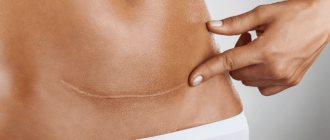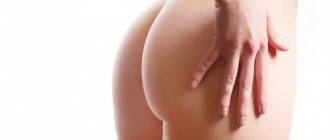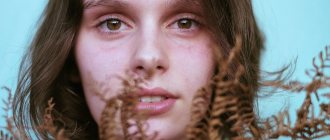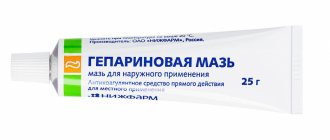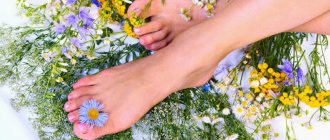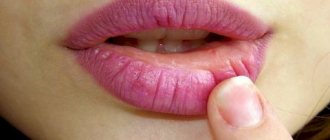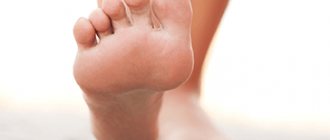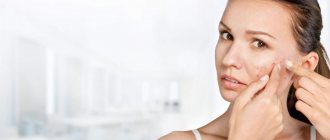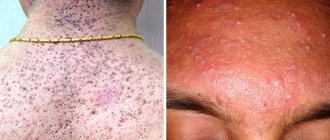March 5, 2020
Acne can cause discomfort at any age. The disease manifests itself with the onset of puberty and in most people ends by the age of 24-25. However, there are groups of patients who suffer from acne throughout their lives. Specialists at the Psormak clinic will tell you how to get rid of acne and significantly improve the condition of your skin.
Types of pathology
Acne provokes disruption of the sebaceous glands. Overproduction of secretions, partial or complete blockage of the gland canal cause such an unpleasant phenomenon as acne. Since the work of the sebaceous glands is regulated by sex hormones, problems begin in adolescence.
There are several types of acne:
- closed glands that appear as white papules or black dots;
- open comedones (gray-white papules, in which the gland canal is partially open);
- papulopustular formations with signs of inflammation;
- severe rashes, characterized by deep pustules and nodules, which can lead to irreversible changes in the skin.
Often the situation is aggravated by the entry of bacteria into comedones, which provokes an inflammatory process.
Treatment of acne and pimples with laser
- To relieve inflammation, the modern Fotona SP Dynamis neodymium laser is actively used. Under the influence of laser beam energy, bacteria that produce porphyrin in the epidermal layers of the skin are destroyed by free radical oxygen formed when this same porphyrin is heated. The energy of the neodymium laser kills the bacterial flora and heats the vessels leading to the sebaceous glands, which significantly reduces the production of sebum. Inflammatory elements absorb long waves in the infrared spectrum and, as a result, chronic and acute processes are stopped. Anti-inflammatory laser treatment for acne is fast, effective and virtually painless. Very often, doctors at our clinic combine manual facial cleansing procedures with laser exposure.
- When treating enlarged pores, congestion and age spots with laser, several types of lasers are used: fractional non-ablative (without damaging the skin) erbium laser Palomar 1540, high-intensity light laser IPL Quantum Lumenis. When carrying out such procedures, metabolic processes are launched in the skin tissues, the work of skin fibroblasts is stimulated and, as a result, the synthesis of elastin and collagen is activated, which give the skin good elasticity. In addition, areas of hyperpigmentation are coagulated and lysed. Therefore, as a result of these procedures, not only the relief and color of the skin is evened out, but also its restoration.
- For laser treatment of post-acne (consequences of acne) - various scars, scars, dimples, etc. – laser peels and laser skin resurfacing are actively used with erbium ablative (skin damage) lasers Fotona SP Dynamis and Palomar 2940. The procedures are performed under local anesthesia. After completing the manipulations, a special ointment is applied to the patient’s skin, which protects it from possible injury and infection. The skin heals in 1–6 days (it all depends on the specific procedure performed and its intensity). The end result of such effects is smooth, smooth skin.
The number of laser procedures for the treatment of acne and acne, post-acne treatment, as well as the intensity of laser exposure is determined by a dermatologist in accordance with the Global Acne Severity Scale (GSS).
Causes of the disease
How to get rid of acne on the face and nose is a question that interests many patients. It is important to understand that the severity of the disease depends on many factors. Modern medicine claims that the manifestation of acne is predetermined by a genetic factor, hormonal imbalance, and chronic diseases of the body.
The intensity of the rash may be influenced by the following factors:
- poor skin hygiene;
- excessive consumption of sweets;
- incorrectly selected decorative and skin care cosmetics;
- stressful situations;
- smoking;
- alcohol;
- premenstrual stage of the female cycle.
Such a variety of factors requires an integrated approach to therapy. To cure acne, examinations are necessary, identifying the cause of the pathology and prescribing adequate medication support.
List of effective acne remedies
Effective medications for rashes cope well with epidermal disorders, do not have negative effects when used correctly, have a small number of contraindications and are well accepted by the skin, without clogging pores or leading to allergies.
Below is a review of the best facial acne treatments for teenagers and adults .
Salicylic ointment
The composition of the medicine includes salicylic acid and petroleum jelly. The substances exhibit a pronounced anti-inflammatory and antiseptic effect. Suitable for treating purulent rashes and lightening the skin after acne. Salicylic ointment is used for no more than 21 days.
Restrictions on use: kidney pathologies. The product has an exfoliating effect and is often used for acne scars. The ointment causes a burning sensation, increases local blood flow, thereby regenerating skin cells.
Heparin ointment
The product contains heparin, benzocaine, and benzyl nicotinate. Healing ointment is indicated for the treatment of comedones and acne. Helps relieve inflammation and has an analgesic effect.
The course of treatment is 2 weeks.
Cannot be used by pregnant or lactating women.
Zinc ointment
The main substance is zinc oxide. Disinfects and perfectly dries purulent rashes, removes acne. Under its influence, traces of acne instantly resolve, and the ulcers themselves dry out, leaving no scars.
Contraindications for use: individual intolerance and allergic reaction to the ointment.
Akriderm
Indications for the use of Akriderm are skin pathologies, including comedones, blackheads, pimples, acne. Hormonal ointment, the main element is glucocorticosteroid betamethasone. This pharmaceutical acne remedy has an anti-inflammatory, anti-edematous effect.
Requires caution in use, as addiction is possible. It is forbidden to apply to large areas of skin and mucous membranes.
Akriderm - various ointments and creams - Genta, GK, SK. A one-component product is sufficient, but if:
- a bacterial infection has joined - the choice of drug is gentamicin and betamethasone - Akriderm Genta;
- a fungal infection occurred - Akriderm GK.
Tetracycline ointment
The antibacterial agent contains a powerful antibiotic - tetracycline. Intended for therapy:
- extensive skin rash;
- effective against purulent acne on the shoulders, eyebrows, head;
- boil;
- trophic ulcers.
Prescribed only if weaker antibiotic ointments do not produce results.
Contraindications: mycosis, children under 12 years of age.
Tetracycline ointment is inexpensive, only 15-20 rubles.
Ichthyol ointment
This is a powerful remedy for facial rashes. The element ichthyol included in the composition creates complex therapy. Black ointment instantly removes inflammation and pain that appears from internal acne. The medication is precisely distributed to the pathological area to accelerate maturation.
Directions for use: 1 time per day until the rash disappears completely. Ichthyol ointment is also used against boils.
The limitation is sensitivity to Vaseline.
Vishnevsky ointment
Birch tar and xeroform are natural components of the medicine. Substances exhibit:
- antiseptic, absorbable seal action;
- ointment accelerates the maturation of ulcers;
- Castor oil softens the epidermis and promotes rapid healing.
The only contraindication: individual intolerance.
Baneocin
The antibacterial complex drug is suitable for the treatment of acne and folliculitis. The active substance is bacitracin, neomycin sulfate. An anti-inflammatory ointment with an antibiotic removes diseases caused by pathogenic microorganisms.
The affected area is treated three times a day for 7 days.
Do not use for severely damaged skin.
Hydrocortisone
Glucocorticosteroid relieves swelling, itching and inflammation. Indicated for non-bacterial skin rashes.
Instructions for use: 2 times a day (morning and evening). The duration of treatment is 1-2 weeks, if necessary, you can take a 3rd week.
Restrictions on the use of the medicine are:
- infection of the epidermis by viruses, bacteria;
- younger age up to 2 years;
- pregnancy period, lactation.
Methyluracil
The main element is methyluracil, aimed at accelerating metabolism in skin tissues. The healing agent provides:
- antiseptic, antibacterial effect;
- relieves inflammation, swelling;
- strengthens the immune system.
The medicine is prescribed for acne, boils, diaper rash, carbuncle, and is also effective in the presence of subcutaneous mites.
We previously wrote about methyluracil suppositories in more detail - we recommend that you read it.
Therapeutic ointment is not recommended for use by pregnant women, women during breastfeeding, or with allergies to lanolin, paraffin, or cancer.
This remedy for acne on the face can be bought at a pharmacy for 30-80 rubles. for the tuba.
Streptocide ointment
Antimicrobial drug with a wide spectrum of effects. It kills streptococcal type bacteria. Relieves inflammation, pain, increases the process of maturation of rashes.
Indications for use: wounds, cuts, erosions, ulcers, erysipelas.
For subcutaneous acne, streptocide is best used in tablet form, crushed and applied as a compress.
Synthomycin
The cleansing product has an immediate effect. Chloramphenicol – the main component relieves inflammation. Intended for the treatment of ulcers, small spots, acne. The antibiotic kills microorganisms that cause acne.
We wrote more about this ointment in our article.
Contraindications for syntomycin ointment:
- liver, kidney failure;
- psoriasis, eczema;
- fungal skin pathologies;
- acute porphyria.
The spot remedy is applied to the pathological area. The duration of treatment is no more than 5 days.
This is a relatively inexpensive remedy for acne - you can buy it at a pharmacy from 76 rubles.
Clotrimazole
An antifungal drug fights inflammation in various parts of the body, acne. Beneficially removes acne marks and age spots.
The only limitation to the use of the ointment is skin hypersensitivity to its constituent components.
The gel is used for a month.
It may be interesting: The most effective remedies for toenail fungus.
Advantan
The active ingredient - methylprednisolone, prevents accelerated cell division, eliminates redness, itching, swelling, and rashes. It is an antiallergic agent.
Indications for use are as follows:
- childhood eczema;
- acne in teenagers;
- seborrhea, exogenous pathologies.
Therapeutic course: 1 time per day for 1 month. in children. The duration of treatment in adult patients is no more than 3 months.
Elon
Oil and larch extract are the main substances that help cope with purulent rashes. Elon ointment effectively draws out pus and relieves inflammation.
The herbal product has almost no contraindications, except for personal intolerance to the constituent components.
The cost of the medicine is 300-600 rubles, it can also be ordered through the online store.
Sinaflan
The active substance is fluocinolone acetonide. The effect of the ointment is as follows: it exhibits antipruritic, decongestant results. Suitable for the treatment of typical and atypical types of rashes. Available in the form of cream and gel.
Sinaflan cannot be used if you have:
- bacterial infection (pyoderma);
- papular acne with syphilis;
- skin tuberculosis.
Adapalene
The dermatotropic agent has an anti-inflammatory, sebostatic effect. The substance Adapalene is used for acne and blocks the development of comedones.
The drug is effective:
- softens dead skin areas, preventing their transformation into keratinized tissue;
- protects the epidermis from the introduction of infectious pathogens.
The therapeutic effect occurs gradually, after about 2-3 months.
Pimafukort
Antifungal, anti-inflammatory, antibacterial express remedy. Indicated for pyoderma, mycoses, superficial dermatoses.
Fucidin
The best bacteriostatic drug, suitable for men and women. Helps cure cystic fibrosis, acne, boils.
A fast-acting antibiotic should be used up to 5 times a day.
Rescuer
A popular regenerating ointment with a softening effect. Prevents the appearance of scars and skin pits after acne, relieves pain, tightens wounds.
The balm has received a high rating on the Internet because it is an inexpensive and effective remedy.
Sulfuric ointment
Consists of precipitated sulfur, has an antimicrobial, drying effect. Helps well with:
- rash;
- subcutaneous acne;
- inflammation during a cold;
- skin parasites.
Use for about 3 weeks.
Baziron
Baziron is a proven ointment for rashes, suitable for dry skin. The medicine produces:
- antibacterial effect;
- corrects sebum secretion;
- pleasantly moisturizes the epidermis.
Effective against acne, juvenile acne, rashes.
Duration of use – 3 months.
Argosulfan
Silver sulfanilamide is the active substance. Argosulfan is an antimicrobial bacteriostatic drug. Suitable for the treatment of purulent wounds, acne, bedsores.
The cream should be applied to the painful area until the wounds are completely healed, but no more than 2 months.
Stellanin
The active ingredient is diethylbenzimidazolium triiodide. The new product kills pathogenic organisms and fungi.
Contraindications: hyperthyroidism, thyroid tumors.
Stellanin is a combined natural ointment. Use: burns, peptic ulcers, bedsores.
Oflomelid
Methyluracil, Lidocaine hydrochloride, ofloxacin - the medicine has 3 main substances. It has an antimicrobial, regenerating, analgesic effect, and helps speed up the healing process.
Prescribed for the following processes:
- trophic ulcers;
- abscess boils;
- removes white rods located in a pimple wound;
- fistulas
Oflomelid should not be used if you are under 18 years of age or if you are pregnant or breastfeeding.
Nystatin
The antifungal antibiotic exhibits a fungicidal effect. Used for stomatitis, candidiasis, diaper rash, mycoses.
Directions for use: apply as a compress at least 2 times a day for 14 days.
Fenistil gel
The 0.1 percent emulsion is suitable for the treatment of both teenage and adult acne, comedones, blackheads, blackheads on the back and face.
Therapeutic effect:
- antipruritic;
- soothing;
- antiallergic;
- anti-bradykinin.
Contraindications: prostatic hyperplasia, sensitivity to dimethindene.
Gentamicin ointment
Used in cosmetology and medicine, treats acne, fungal dermatitis, seborrhea. Does not affect fungi or viruses.
Negative manifestations: hematopoiesis disorder, malaise, weakness, headache.
Retinoic ointment
Skin care cosmetics are effective against acne, blackheads and prevent the appearance of wrinkles in women. The ointment increases blood circulation and renews skin cells. The effect of the drug is uncertain and can lead to irritation of the epidermis, redness, and burning.
Erythromycin ointment
Used in combination with other medications. The active component of erythromycin ED copes favorably with purulent rashes, wounds, burns, and conjunctivitis.
Therapeutic course – 1 month.
Levomekol
The product is intended to eliminate rashes and ulcers. For teenagers - an excellent salvation, removes painful acne on the face and forehead.
Chloramphenicol, methyluracil – active ingredient:
- relieves inflammation;
- has an antimicrobial effect;
- dries out the skin.
Treatment should be carried out for no more than 1 month.
Lincomycin
The antibiotic removes erysipelas, pyoderma, felon, furunculosis, and purulent rash. Active ingredient: zinc oxide, lincomycin hydrochloride. Not used for renal or liver failure.
Gistan
The cosmetic product eliminates allergic rashes, relieves inflammation, relieves symptoms of the disease, regenerates the skin, and blocks the production of histamines.
Comfoderm
Methylprednisolone aceponate is the active substance. The ointment treats:
- eczema;
- dermatitis;
- inflammatory skin pathologies;
- Suitable for acne spots.
Features of use: do not exceed therapy for children for more than 28 days, for adults - 3 months.
Boromed
Antiseptic cream reduces swelling and inflammation, soothes the skin, dries out ulcers, has a resolving effect, prevents the formation of irritations after shaving, and smoothes out fine wrinkles.
Contraindicated in children under 12 years of age.
Therapy
When considering the question of how to get rid of whiteheads, you need to understand that diet plays an important role in therapy. It must be balanced in nutrients. Doctors recommend consuming large amounts of complex carbohydrates and limiting the amount of sweets. It is necessary to monitor the normal functioning of the intestines. The high polyphenol content of chocolate also contributes to skin inflammation, so patients are advised to limit this product in their diet.
In general therapy, a distinction is made between local and systemic drugs.
The local group includes the following products:
- antibacterial ointments;
- ointments based on retinoids (promote skin regeneration);
- skincare products based on salicylic acid.
The peak of the disease occurs in adolescence; if you follow the doctor’s recommendations and take proper care of your skin, the rashes become smaller. If the causes of acne are systemic disorders, a specialist may prescribe the following medications:
- antibiotics;
- combined oral contraceptives to normalize the menstrual cycle;
- retinoids;
- medications to correct the functioning of the gastrointestinal tract.
Clinical manifestations
The general picture of acne is characterized by polymorphism ( Fig. 2 ). The evolution of acne elements is as follows:
| Closed comedones and milia → open comedones → follicular papules and nodules → follicular pustules → scars and spots. |
Clinical forms of acne:
- Prepubertal acne
- Juvenile acne
- Late acne
- Indurative acne
- Acne conglobata
Prepubertal (pre-adolescent) acne - occurs at the age of 7-12 years and is caused by the onset of puberty. There is an increase in skin oiliness and a large number of comedones, mainly on the forehead and in the central part of the face (T-zone).
Juvenile (ordinary, vulgar) acne is the most common type of acne. They are open and closed comedones, papules and pustules located on the forehead, nose, cheeks, temples, often on the chest and back. In girls, 5–7 days before the onset of menstruation, the rashes become more numerous.
Late-onset acne (adult acne) occurs more often in women. There are relatively few rashes - unlike youthful ones, they are located in the lower part of the face (on the cheeks, chin, around the mouth) and on the neck. Almost half of patients have a rash on their body. Papules exist for a long time (1–3 weeks), are painful, there are usually few or no comedones, exacerbations are associated with stress. Late acne also includes postmenopausal with the predominant formation of comedones and the absence of pronounced inflammation.
Indurative acne is characterized by an active inflammatory reaction and a predominance of deep-lying, dense, painful nodes that merge with each other. Subsequently, they heal through scars ( Fig. 3 ).
Acne conglobata - it affects mainly men with very oily skin. With age, there is a tendency to recovery, but outbreaks of the disease occur from time to time. The main morphological element is a large red painful hemispherical node. At first it is dense, but later softens. The nodes can merge and turn into abscesses, after opening which remain long-term non-healing ulcers and fistulas that heal with rough scars. Sometimes, when nodes merge, draining sinuses are formed. The disease is almost never limited to the skin of the face - on the contrary, the largest nodes are usually located on the chest and back.
To assess the severity of acne in clinical practice, it is convenient to use the recommendations of G. Plewig and M. Kligman ( Table 1 ).
Table 1. Determination of acne severity according to G. Plewig and M. Kligman (2004)
| Severity | Comedones | Papules, pustules | Papules (>1 cm) | Nodes, cysts, fistulas | Inflammation | Scarring |
| I (mild) degree - comedonal acne | <20 | <10 | No | No | No | No |
| II (medium) degree - papulopustular acne | >20 | 10–20 | <10 | No | Clear | No |
| III (severe) degree - papulopustular acne | >20 | >20 | 10–20 | Few | Strong | Eat |
| IV (very severe) degree - conglobate acne | A lot of | A lot of | >20 | A lot of | Very strong and deep | Eat |
A separate form of the disease is medicinal acne, which occurs while taking certain medications - these are glucocorticosteroids, anabolic steroids, androgens, thyroxine, antiepileptic drugs, barbiturates, anti-tuberculosis drugs, azathioprine, cyclosporine A, lithium salts, iodine, chlorine, bromine preparations, cetuximab , some vitamins (for example, group B).
Rice . 2. Polymorphism of acne elements on the patient’s cheek (Danish national service on dermato-venereology)
https://www.danderm-pdv.is.kkh.dk/atlas/4-102-4.html
Rice. 3. Scars on the face that appear after healing of large inflammatory elements of acne (Danish national service on dermato-venereology)
https://www.danderm-pdv.is.kkh.dk/atlas/4-133.html
Treatment procedure using the M22 device
The treatment principle is based on the targeted action of light rays in the range of 311 nm. The phototherapy procedure is absolutely painless and safe, and at the same time very effective. There is no long recovery period required after it. Additional advantages are that one session only takes about 30 minutes, and the effect is targeted only to problem areas.
In addition to the treatment of comedones and acne, there is also photorejuvenation, pigmentation treatment, lifting, and also has an antiseptic effect. The necessary parameters are set on the device: wavelength and depth of exposure, radiation intensity, intervals between flashes and their duration. Before the procedure, the cosmetologist cleanses the skin, applies a conductive gel and protects the eyes of himself and the patient with special glasses.
The M22 hardware procedure is recommended not only for the treatment, but also for the prevention of acne.
Preparations with benzoyl peroxide –
Benzoyl peroxide is a bactericidal component and is probably the best remedy for acne (it can even be called the gold standard of therapy). This is a bactericidal component that effectively inhibits the growth of P. acnes bacteria, leading to the development of local inflammation in the area of hair follicles and the appearance of papules and pustules (pimples). It is very important that benzoyl peroxide, unlike antibiotics, does not cause the emergence of antibiotic-resistant microflora.
Professional pharmaceutical preparations with benzoyl peroxide are produced in the form of a gel (usually with a concentration of 2.5 or 5%). For the first month, in order to get the skin accustomed to benzoyl peroxide, it is optimal to use a concentration of 2.5%, and then switch to 5% of the product. If you use more concentrated products at once, irritation will likely appear on the skin. The classic monocomponent preparation with benzoyl peroxide 2.5 or 5% is Baziron-gel.
Combination drugs - but there are drugs where benzoyl peroxide is combined with an antibiotic or retinoid. As you will see below, each of these drugs will be effective in slightly different clinical situations, for example, depending on what type of inflammatory components (papules or pustules) you have. Examples of combination drugs for acne treatment:
- Indoxyl (UK) – benzoyl peroxide 5% + clindamycin 1%.
- Effezel (France) – benzoyl peroxide 2.5% + retinoid adapalene 0.1%.
How to choose the right drugs:
1) For mild to moderate papulopustular acne, the choice depends on the predominance of certain inflammatory elements. If papules predominate (without pus inside), then in this case the combination of “benzoyl peroxide + retinoid” will be optimal. For example, this could be the combination drug Effezel. But for patients with sensitive skin, it is better to use a combination of two monodrugs - benzoyl peroxide in the morning and a retinoid in the evening.
Thus, you can use the drug “Baziron” with benzene peroxide in the morning, and in the evening – one of two drugs “Klenzit” or “Differin” (containing the retinoid adapalene) of your choice. But if you have pustules with pus, then to the above combination of “benzoyl peroxide + retinoid” we also add external use of an antibiotic.
2) For severe papulopustular acne, we also use “benzoyl peroxide + retinoid” for external use, and also add systemic antibacterial therapy. Antibiotics for this form are used only orally, in long courses of up to 6-8 weeks (see above).
Side effects of benzoyl peroxide: Be aware that itching, burning sensation, dryness, tightness, redness, or flaking of the skin may occur after use. But usually these effects are not too pronounced. If you use the drug during active sunny periods, be sure to use sunscreen, because Benzoyl peroxide makes facial skin more sensitive to sunlight.
What are comedones and what are they like?
Epidermal cells are constantly renewed throughout a person's life. And during the normal course of this process, the keratinized cells are exfoliated on their own, and the sebaceous ducts perform the function of secreting sebum ( sebum ). Sebum forms a hydrolipidic protective film on the surface of the skin.
However, in some cases, dead cells are not removed on their own, but form a stratum corneum that clogs the sebaceous ducts. Sebum can also become thicker for a variety of reasons, including being full of toxins. Due to the subcutaneous plug, a capsule is formed in the sebaceous gland, which creates an ideal environment for the development of bacteria. All this leads to inflammation, which is called comedones.
Care after laser facial cleansing
A laser beam of a given frequency penetrates deep into the dermis, completely removing the upper problematic layer along with comedones, acne and age spots. The procedure has a rejuvenating effect. Recovery takes 3-5 days. During this time, you should limit your exposure to the sun, avoid temperature changes and intensively moisturize your skin.
Care after combined facial cleansing involves following the principles prescribed for each procedure. Until complete recovery, you should avoid decorative cosmetics, do not use products with alcohol, and protect your skin from ultraviolet radiation and physical influences.
How to get rid of closed comedones on the face
To completely get rid of comedones, it is necessary to take comprehensive measures: consult a dermatologist or cosmetologist, and also follow all instructions at home.
So, at home you need :
- make therapeutic masks containing blue clay, as well as light peelings and scrubs for home use;
- include antioxidants : fresh fruits and berries, spinach, lettuce leaves, green tea - this will help remove toxins from the body;
- use cosmetics containing keratolytics .
Keratoloitics are necessary to thin the stratum corneum of the skin, which increases the risk of comedones. Among them:
- salicylic acid 2-4% (cosmetics with a high percentage of acid are suitable for the skin of the back, neck, etc.);
- fruit acids AHA (or hydroxy acids), because they oxidize the pH of sebum, which prevents the proliferation of bacteria;
- retinol (including in peelings) - as a rule, is prescribed for external use for a long period, up to six months, with a gradual increase in the amount of the drug and the frequency of application. Suitable for the treatment of acne and multiple comedones. Oral systemic retinoids are prescribed by a doctor if necessary.
The use of keratolytics has a complex effect on the epidermis: cleansing, softening, antiseptic, brightening, stimulating the removal of the stratum corneum, opening comedones and cell renewal.
However, their use also thins the skin, making it more sensitive and unprotected, including from the sun. The cosmetologist chooses the appropriate remedy for each clinical situation and the duration of its use. He will also suggest the optimal sunscreen and tell you about other methods of skin protection.
Let's consider the options for solutions and treatment procedures that modern professional cosmetology can offer.
Can spots go away on their own?
How to quickly remove acne marks, and can they disappear without any help? This question is asked by many patients who are encountering this problem for the first time. It is important to remember that scarring and pigment formations on the skin cannot be ignored; it is imperative to undergo treatment. They do not go away on their own, and without the necessary therapy the situation can only get worse. Therefore, we recommend that you come for a consultation with a dermatologist and, if necessary, undergo an examination.
We recommend
Curacen Essence (20 fl x 2 ml)
Nanoneedles with ultra-thin walls 30G
Nanoneedles with ultra-thin walls 33G
Curacen – for injection
